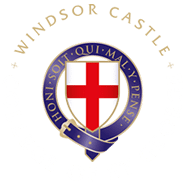
Luther was born in Saxony in 1483. Despite an early career in law, he became a monk in 1505 where he dedicated his time to the monastic life of poverty, obedience and prayer. He was ordained as a priest, and became a professor of Theology at the University of Wittenberg. Through his studies, he became more disenchanted with certain practices within the Roman Catholic Church, notably the sale of indulgences.
Traditionally, the Church said that faith was not enough to get you out of purgatory and into heaven; you had to show your devotion through acts of charity and good work, thus gaining forgiveness for your sins on earth. The Church offered an alternative, the purchase of an indulgence; instead of undertaking acts of good work yourself, the donated money could be spent in benefit of the church. The Roman Catholic Church was looking to raise money for the rebuilding of St Peter’s Basilica in Rome, and the faithful were being encouraged to purchase these indulgences as a way of financing the work.
Luther objected, writing his famous “95 Theses”. He believed that only God could absolve men from their sins, and that those selling these indulgences were offering false hope. He taught that salvation is not from good works, but a free gift of God, received only by grace through faith in Jesus as redeemer from sin. His theology challenged the authority of the Pope by teaching that the Bible is the only source of divinely revealed knowledge. He was accused of heresy and summoned before the Pope. In 1521 the Diet of Worms decreed him a heretic and an outlaw; he was excommunicated and cast out of the Church. The Protestant Reformation had begun.
The frontispiece of these volumes of Luther’s works has an illustrated border showing the emblems of the four evangelists in roundels; at the bottom, the Duke of Saxony, a Protestant who made Lutheranism the state religion of the Duchy of Saxony, and Luther are depicted kneeling before the crucified Christ. The binding shows evidence of being part of a chained library.
Eleanor Cracknell, Assistant Archivist
